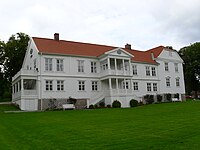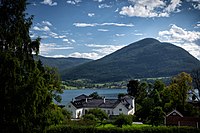Seat farm

Artist: Jens Peter Trap (ca. 1860)
In Scandinavia, a seat farm (Danish: sædegård; Norwegian: setegård/setegard; Swedish: sätesgård or säteri; Finnish: säteriratsutila) was a farm where a nobleman had his permanent residence. They were found in the Kingdom of Denmark, the Kingdom of Norway, the Kingdom of Sweden, and Finland, and enjoyed certain privileges.
Norway


The term was originally used for any farm where a nobleman chose to reside. In 1639 the status of seat farm was restricted to farms that for at least the previous forty years had enjoyed this status.[citation needed] After 1660, when absolute monarchy was introduced in Norway, non-noble persons could also achieve this status for their farm of residence.[citation needed]
Seat farms had, especially, freedom from taxes and tithes. After 1800 the tax exemption was modified, and under the 1821 Nobility Law the exemption ended upon the death of the person owning the farm at the time of the law's enactment.[citation needed]
- Approximate number of seat farms in 1639: 100
- Approximate number of seat farms in 1821: 25
List of Seat farms in Norway
See also
Literature
- Hvidtfeldt, Johan (editor): Håndbog for danske lokalhistorikere (in Danish)
- Vigerust, Tore H.: vigerust.net: Adelens setegårder, hovedgårder og jordegods i Norge til ca 1800 at vigerust.net (in Norwegian)
- Nationalencyklopedin: säteri at ne.se (in Swedish)
- Norsk historisk leksikon: Setegård at lokalhistoriewiki.no (in Norwegian)
- Store norske leksikon: setegård at snl.no (in Norwegian)
















